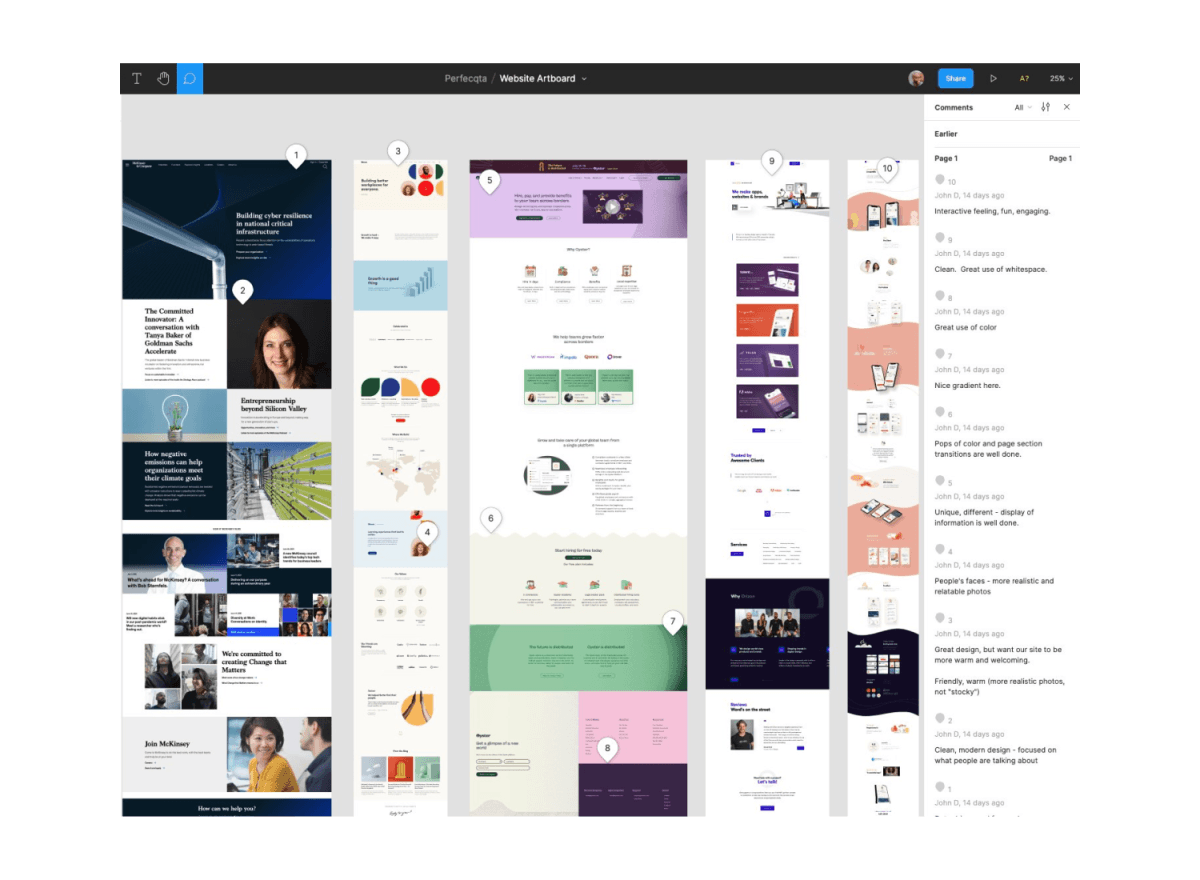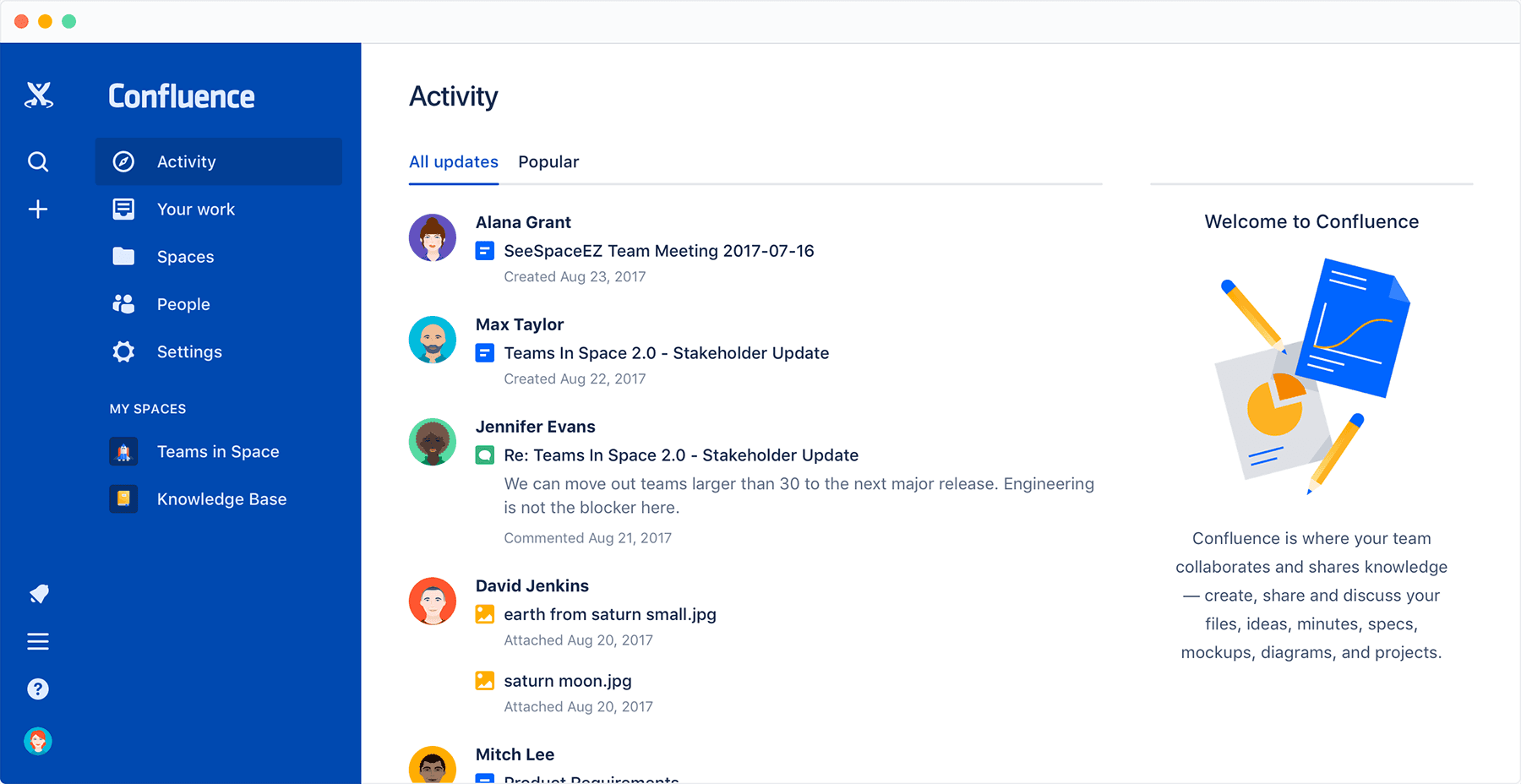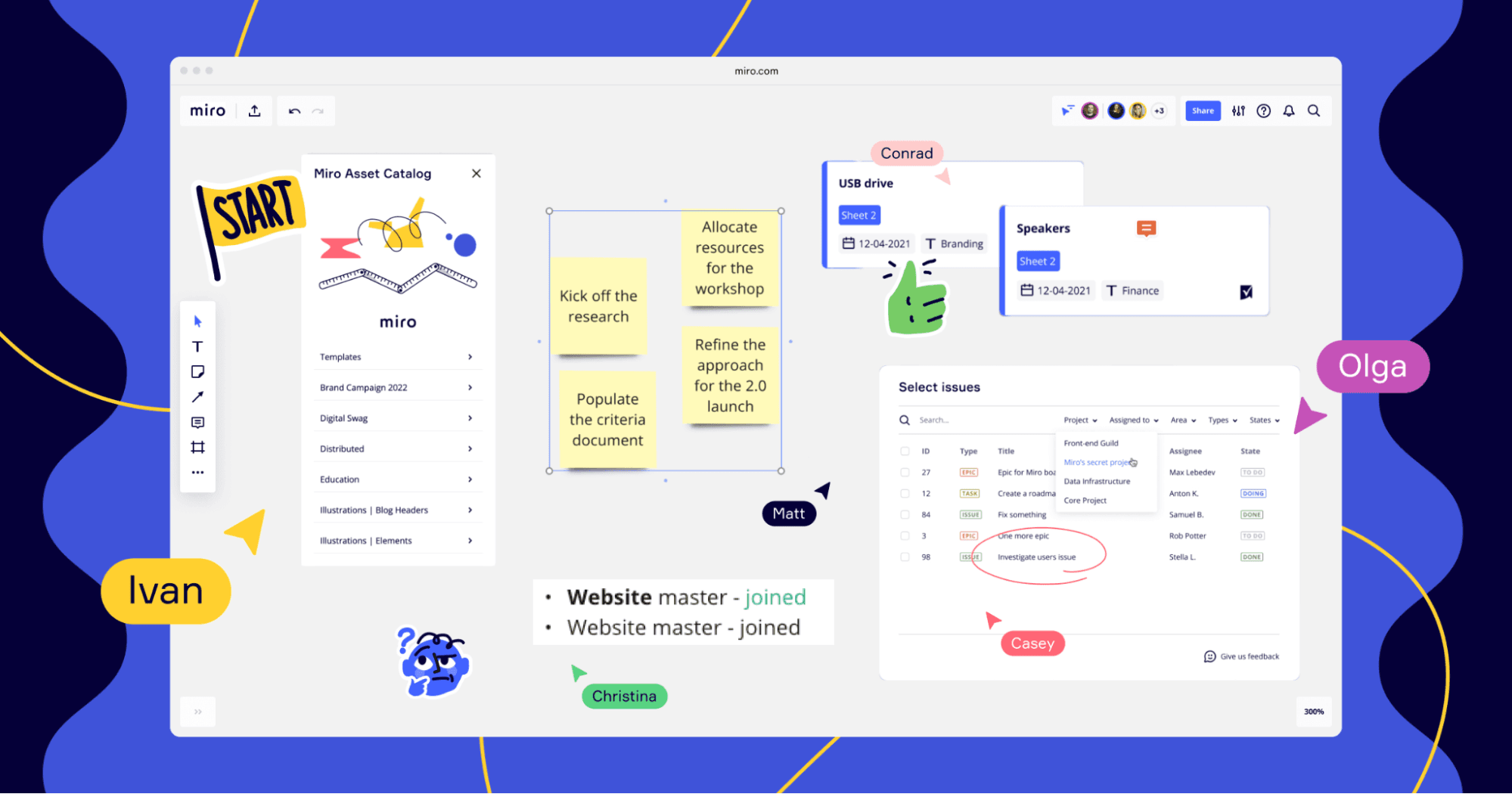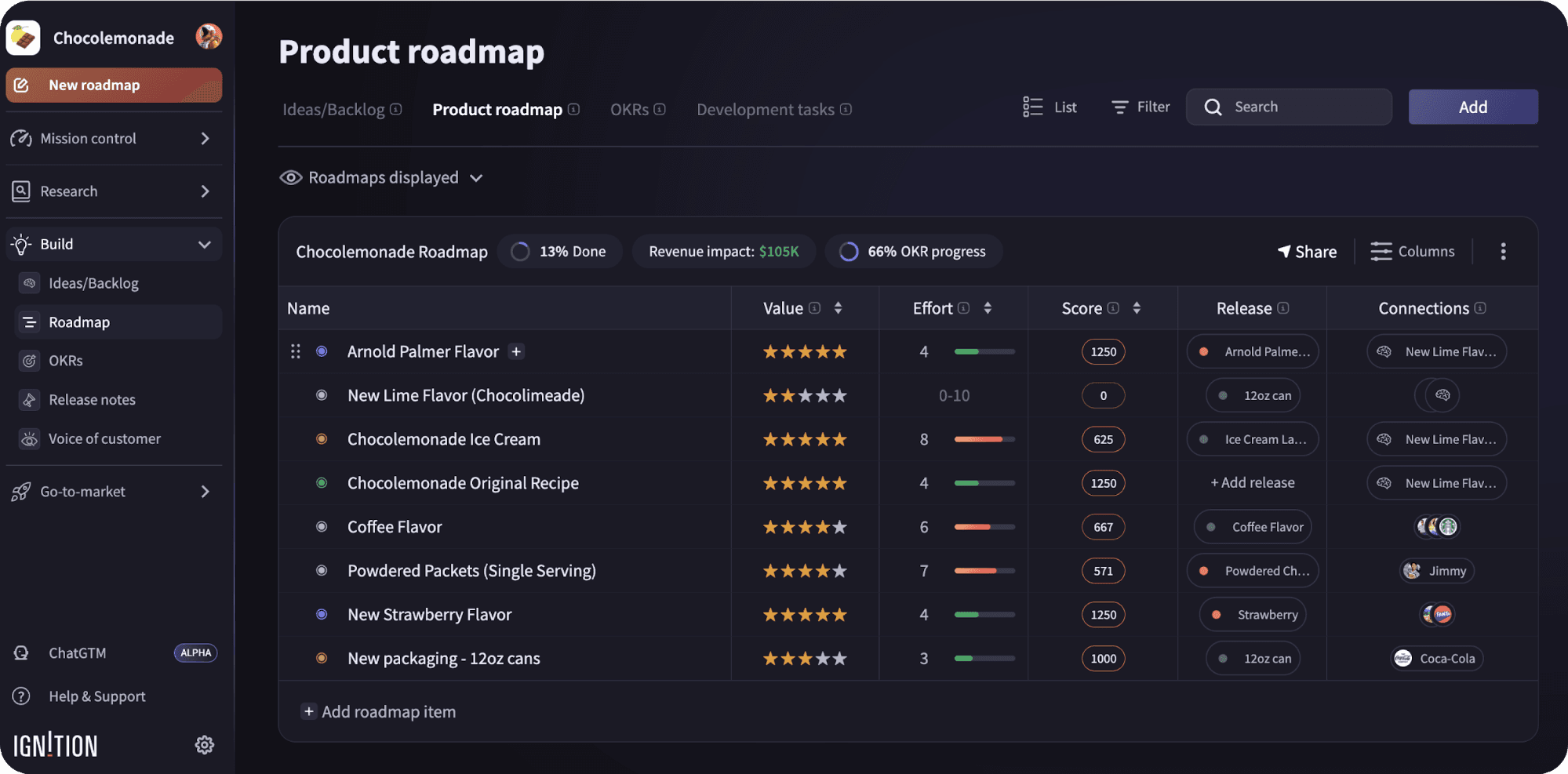As a product manager, your role covers a lot of ground. You have to create and maintain the product roadmap, communicate and collaborate with members of the product and go-to-market teams, and keep an eye on how customers are using your product, among other things.
To do all of this well, you need a solid selection of product management tools, which is exactly what we’re going to help you build.
In this article, we’ll explore 11 of our favorite tools for specific facets of the product management role and dive into the pros and cons of each. Then, we’ll provide insight into the importance of integrating these tools to create a cohesive tech stack and look ahead to product management tools of the future.
1. Loom: Video messages

Loom is an AI-powered video messaging platform. It is an easy-to-use screen recorder that offers helpful sharing and engagement features and a dedicated space to store and manage all your video recordings.
It’s the perfect partner for product managers and one of the best product management software solutions around for accelerating collaboration through asynchronous communication.
Key features:
Multiple recording options: Record your full screen, one tab, or a specific portion of your screen. Hop on camera with your webcam for added expressive value.
Engagement tools: Add comments, react using emojis, or quickly reply with Loom videos to add context or pose a question.
Drawing tools: Draw attention to mouse clicks or write on your screen while you record.
Artificial intelligence: Save time with our AI engine, which automatically generates shareable links and custom messages. You can even use it to cut out silence and filler words.
Loom HQ: Organize and search for video content and easily share it with team members with a dedicated storage solution.
Pros:
Loom can help you cut out unnecessary remote meetings.
Video communication offers more context and expression than just written text.
You can restrict videos to your intended audience using password protection and limited access features.
Loom offers a simple and easy-to-understand user interface.
You can use one tool to facilitate collaboration across multiple teams.
Cons:
If you’re on the free plan, you’ll be limited to a maximum length of five minutes per video.
Pricing:
Pricing for Loom starts at $12.50 per user per month for our Business plan. You can also start with a free plan to see if Loom is right for you.
2. Figma: Front-end design

Figma is a collaborative product management tool built specifically to help teams collaborate on the front-end design of the products they’re building.
This is especially helpful for remote teams that can’t get together to whiteboard design ideas.
Key features:
Drag-and-drop editor: Jump right into designing—no technical coding experience required.
Pre-loaded frames: Get started quickly with templates for different screen types (mobile vs. desktop vs. laptops of different sizes).
Collaboration features: Communicate in context by dropping comments and suggestions, all while preserving version history.
Pros:
Figma helps you easily facilitate remote team collaboration.
Version control and history access make it easy to trust remote teams to work autonomously.
Figma offers many great integrations with other popular online collaboration tools, such as Google Workspace and Microsoft Teams.
Cons:
Since it is a cloud-based platform, Figma’s offline functionality is very limited.
Some users experience issues with the platform’s speed when handling large files.
Pricing:
Figma offers three paid pricing plans at $12, $45, and $75 per month, depending on the level of sophistication you require.
3. Confluence: Knowledge management

Confluence is a remote team workspace for knowledge and idea management. It’s the perfect place to store standard operating procedure (SOP) documentation.
Key features:
Endless organization: Customize Confluence for your needs—organize workspaces, folders, and pages to create an environment that works for your team.
Collaboration functionality: Collaborate and communicate with comments, coediting, and automated notifications.
Templates: Get a head start with various pre-built templates, from status updates to plans for product strategies.
Pros:
Confluence comes from Atlassian, a behemoth in the SaaS space, so it integrates nicely with other Atlassian project management tools like Trello and Jira.
This platform is a much more user-friendly, flexible tool than traditional documentation solutions like Google Docs or Dropbox.
Cons:
Confluence is a powerful product, so it might present a rather steep learning curve for new users.
Pricing:
Pricing for Confluence depends on how many users you have and the specific features you require, but you can get it for as low as $6.05 per user per month. Confluence also offers a free plan.
4. Miro: Virtual whiteboard sessions

Miro is one of the best product management tools for inspiring cross-functional collaboration and replacing traditional whiteboard sessions.
Key features:
Unlimited workspace: Make your Miro documents as small or large as you need.
Visual representations: Choose from post-it notes, workflow arrows, comments, graphs, and more to visually represent your thinking.
Talk-track recordings: Embed a brief video into a Miro document to walk coworkers through what you’ve created and add additional context.
Miro Assist: Leverage AI-powered collaboration to design and brainstorm faster.
Pros:
Miro makes it easy for hybrid and remote teams to collaborate with virtual whiteboarding sessions that resemble their traditional counterparts.
The platform integrates with numerous tools, allowing you to pull in data from multiple sources.
Cons:
While you can create expansive boards using Miro, the platform can become a little slow when these boards grow too large.
Some users have reported that Miro’s customer support response times can be slow.
Pricing:
Pricing for Miro starts at $8 per user per month.
5. Mixpanel: Product analytics

Mixpanel is an analytics platform for tracking and monitoring user behavior. It offers some advanced features that aren’t common in more basic analytics tools, such as cohort analysis and custom funnel analysis in the context of customer satisfaction or conversion.
Key features:
Event tracking: Understand user engagement by tracking interactions and custom events on your app or website.
Retention analysis: Track how often users return to your site or app to improve retention and reduce churn.
A/B testing: Optimize your product for user engagement with Mixpanel’s advanced testing capabilities.
Pros:
Mixpanel offers an intuitive and easy-to-navigate user interface.
Its reporting and analysis capabilities are quite powerful, especially for a tool that you can access for less than $300 a year.
Cons:
Some users have concerns about data sampling issues.
Mixpanel offers limited attribution modeling compared to other analytics solutions.
Pricing:
While a free plan is available, paid options for Mixpanel start at $24 per month.
6. Ignition: Roadmapping

Ignition is an AI platform that helps product teams connect their software development roadmap to revenue, prioritize features based on customer feedback and user data, and generate marketing assets like sales battle cards.
Key features:
Competitive intelligence: Pull competitive data from multiple sources, such as press releases and social media, and analyze it all in a single hub.
AI-built roadmaps: Design and edit product roadmaps with an AI-driven analysis of various data points to determine what to build next.
Deep reporting and analytics: Use powerful reporting tools to track objectives and key results, surface metrics, and opportunities to improve after product launches.
Pros:
Planning out the product development process is much easier with AI tools to generate product plans.
Ignition is one of the most forward-thinking and innovative product management tools out there— and it’s built specifically for product teams (compared to general tools that serve multiple use cases).
Cons:
Ignition is one of the more expensive tools on our list.
Since it is a unique and complex solution, Ignition might come with a bit of a learning curve.
Pricing:
Ignition has a freemium plan, but its more advanced paid solution starts at $79 per user per month.
7. ProductPlan
ProductPlan is a planning and roadmapping solution for product teams. It's a user-friendly solution and comes with some helpful built-in product prioritization tools.
Unfortunately, it doesn’t offer a free plan, and some users note that there aren’t as many onboarding and support documents or tutorials as they desired.
8. Jira
Jira is the industry standard for bug-tracking software. Product teams around the globe use it to track issue tickets, collaborate with support and success teams, and ultimately inform and improve the product development roadmap.
Since it is an Atlassian tool, Jira integrates well with other popular product-related tools like Confluence and Trello and is incredibly flexible.
It is, however, quite costly for small teams, and it has a steep learning curve due to its complexity.
9. Split.io
Split.io is a feature management solution. It helps you easily switch features on and off, monitor the impact of new feature rollouts, and granularly target specific uses to soft-launch new features.
Split.io is a little limited in terms of the developer experience, though. It also doesn’t offer a YAML editor or GitSync.
10. Reforge
Reforge isn’t exactly a “tool.” Rather, it's a community where product experts share “artifacts” (templates, workflows, and code snippets) to help others work faster and smarter.
This can be a great way to spend your learning and development budget since it allows your team to learn directly from experts and gain access to artifacts that they can use in their own projects.
However, at $2,000 per year, it's not the cheapest tool on this list.
11. Atlas
Atlas is another tool from tech giant Atlassian. This one focuses on goal tracking.
The tool helps product team leaders monitor key performance indicators and objectives and key results, track team and individual performance, and produce reports quickly.
One of the major drawbacks of this tool, however, is the need for a lot of manual input from team members in order to keep the goal-tracking dashboard up-to-date.
Integrating product management tools into your business processes
Each of the 11 tools we’ve discussed above is great in isolation, but they are even more powerful when they work in sync.
Connecting the product management tools you use via native integrations will help to minimize extra data entry and streamline workflows.
For example, you can integrate Loom with Miro to play videos directly in the virtual whiteboard tool. Or consider the Loom integration with Confluence.
By connecting these two powerful product management tools, you can sync and embed Loom videos alongside notes or images to provide more context for SOPs and other internal documentation.
The future of product management and tool evolution
What can we expect from product management tools as we move into the second half of the 2020s?
The biggest developments will likely be those that come out of left field. Technology is developing at such a rapid pace that we can no longer reliably predict what will happen in even a few years.
But there are a few things we can bank on:
A greater use of asynchronous communication to accelerate collaboration within remote teams
Continued investment in data security and compliance
An increased use of AI in product management and development tools (alongside an increased investment in employee upskilling in AI)
Adjustments to traditional Agile processes to better support distributed teams
The continued consolidation of stand-alone best-in-class tools into all-in-one suites
A focus on improvement connectivity via native integrations
Boost your product management with Loom
The best tools will always focus on improving communication within distributed teams, which is exactly what Loom does. Loom’s powerful and flexible video messaging suite is the perfect partner for product managers.
Plan asynchronously with your remote team, drop a quick video to accelerate feedback cycles, and empower your sales team by highlighting the value that your latest features provide.